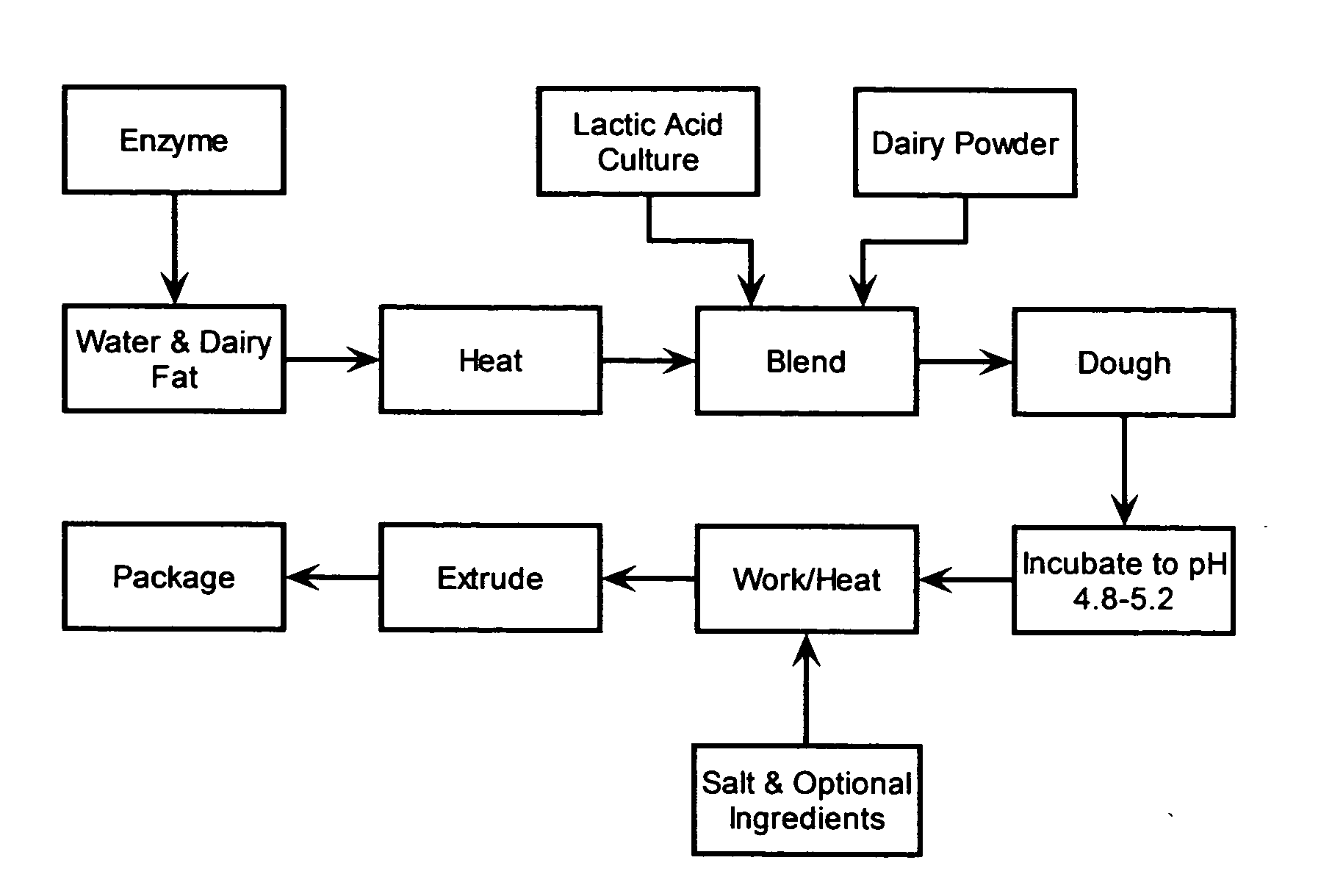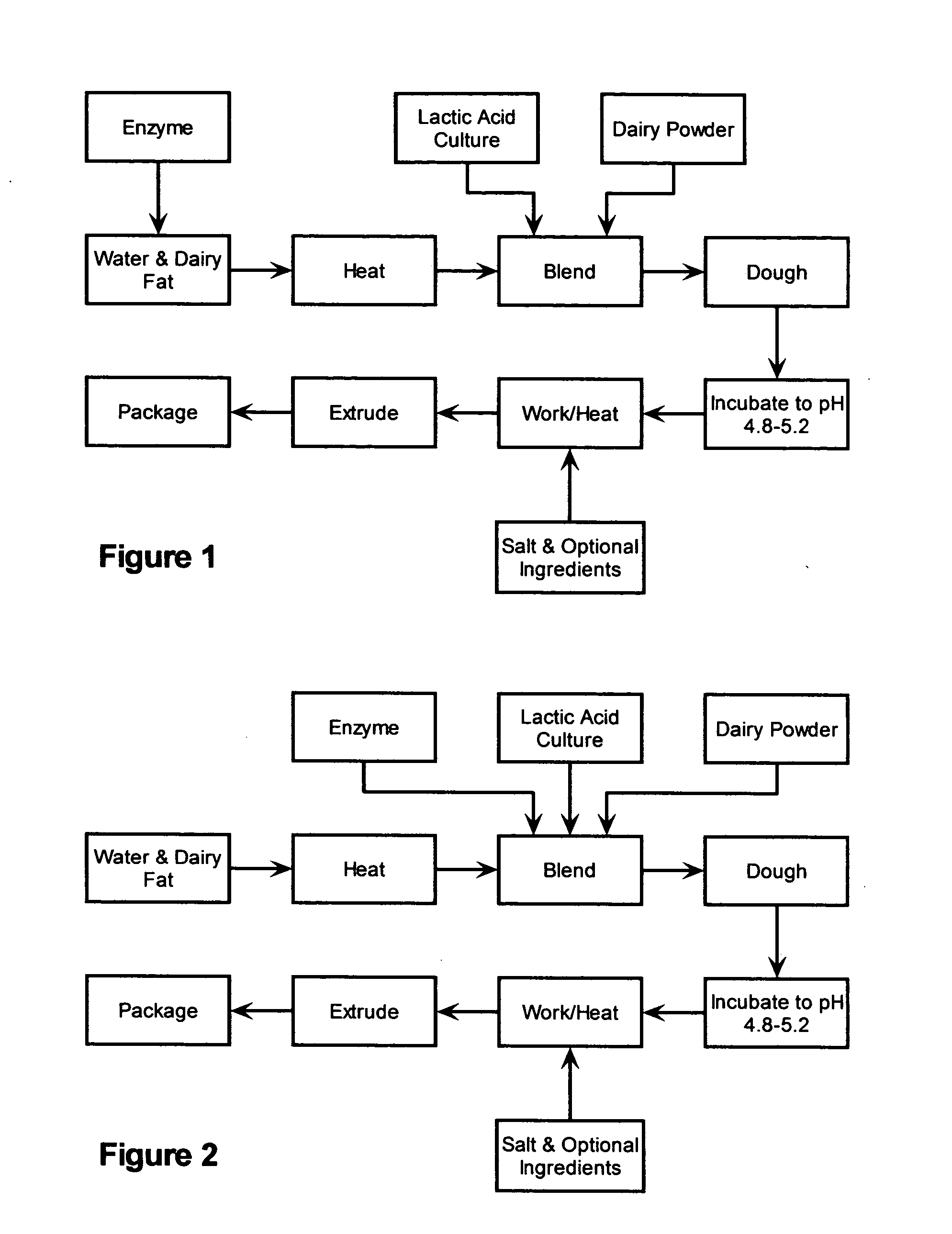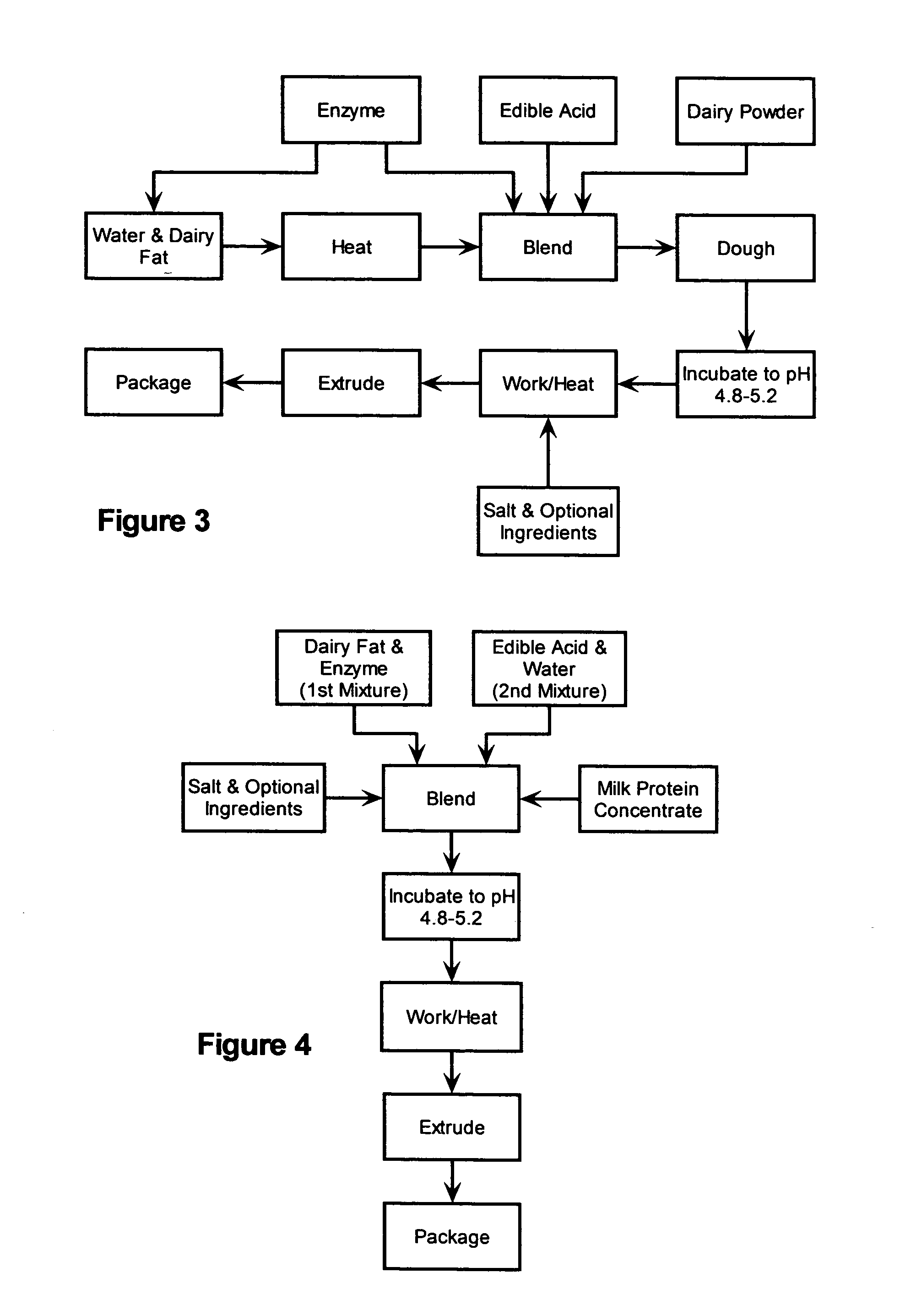Wheyless process for the production of string cheese
a technology of string cheese and whey, which is applied in the field of wheyless process for the production of string cheese, can solve the problems whey loss of valuable fat and milk proteins, and high cost, and achieves the effect of reducing lactose and salt levels
- Summary
- Abstract
- Description
- Claims
- Application Information
AI Technical Summary
Benefits of technology
Problems solved by technology
Method used
Image
Examples
example 1
[0091] Recombinant chymosin (0.005 lbs; Hansen's Chymax) was added to cream (about 44% milkfat; about 18 lbs) to produce a first mixture. Lactic acid (88%; about 0.8 lbs) was added to water to produce approximately 13 lbs of a second mixture. The two mixtures were combined to form a blend and added to a horizontal mixer with a paddle-bladed agitator (Marion model 1101 mixer, Rapid Machinery Co., Marion, Iowa) operated at approximately 50 rpm. Non-fat dry milk (about 2.5 lbs) and a calcium and whey protein-depleted milk protein concentrate (about 15 lbs) was added to the blend. The blend was mixed at a temperature of about 72 to about 74° F. for about 10 minutes, at which time the pH was about 5.2. The thoroughly mixed blend was then placed in a laydown cooker equipped with a single auger mixer. The blend was heated rapidly via direct steam injection to a temperature of 155° F. while the auger revolved at a speed of 124 rpm. The molten mass was transferred to a low-shear twin-screw e...
example 3
[0094] In this comparative example, the same ingredients and procedures were used as in Example 2 except that no chymosin was included in the formulation. The resulting product, which had a pH of about 5.15, was firm but lacked the fibrous strips typical of string cheese.
example 4
[0095] Chymosin (0.005 lbs; Hansen's Chymax) was added to cream (40% milkfat; about 19 lbs) to produce a first mixture. Lactic acid (88%; about 0.8 lbs) was added to water (about 6 lbs) to produce a second mixture. The two mixtures were combined and added to a Hobart mixer with a paddle-bladed agitator (Hobart model M 802U) operated at about 80 rpm. A calcium and whey protein-depleted milk protein concentrate (about 12 lbs) and salt (about 0.8 lbs) were added and the mixture mixed at about 72 to 74° F. for about 20 minutes, at which time the pH was 5.2. The thoroughly mixed mass was then placed in a laydown cooker equipped with a single auger mixer. It was heated rapidly via direct steam injection to about 165° F. using an auger speed of about 124 rpm. The molten mass was then stretched repeatedly by hand to determine if it had developed a fibrous texture. The stretched mass was placed in a 5% salt solution chilled below 45° F., where it remained until firm and well chilled. The chi...
PUM
 Login to View More
Login to View More Abstract
Description
Claims
Application Information
 Login to View More
Login to View More - R&D
- Intellectual Property
- Life Sciences
- Materials
- Tech Scout
- Unparalleled Data Quality
- Higher Quality Content
- 60% Fewer Hallucinations
Browse by: Latest US Patents, China's latest patents, Technical Efficacy Thesaurus, Application Domain, Technology Topic, Popular Technical Reports.
© 2025 PatSnap. All rights reserved.Legal|Privacy policy|Modern Slavery Act Transparency Statement|Sitemap|About US| Contact US: help@patsnap.com



